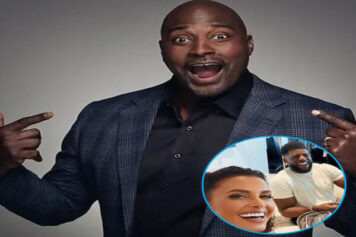Twenty-two hours after losing 3-1 to the Los Angeles Galaxy in the Major League Soccer Cup Final, the Houston Dynamo arrive at Bush Intercontinental Airport
The 30,510 soccer fans that filled Home Depot Center in Carson, California are long gone. All that’s left is the smattering of fans peppered in between luggage carrousels at Terminal C, asking for autographs and cell phone pictures with the players, who are emotionally spent and crestfallen, bent on grabbing their bags with the quickness and going home to process defeat, again.
“Unfortunately, we weren’t able to win yesterday and last year,” says Dynamo outside defender Kofi Sarkodie (PRONUNCIATION: KO-fee sar-KO-dee). “But with the way we’ve made the finals the last two years, it shows that the team’s moving in the right direction.”
But there is more than defeat here. There is also the stench of anonymity, which is thick and lingers in the air like cigarette smoke. There are no entourages or hangers on. Only soccer Moms and Dads in full Dynamo garb. The MLS fandom, for the most part, remains vacuous and stagnant. What’s evident, with all of the success the “Orange Crush” has had garnering a solid fans base is this: soccer has not managed to engage or permeate the black community. I mean, let’s face it; until cats can be found rockin’ the team jersey as a fashion statement, your team is not a phenomenon with us.
Matches like the aforementioned one between the MLS Champs, the L.A. Galaxy, and the Dynamo should have been one made for celluloid. It was like the Miami Heat vs. the San Antonio Spurs, but on the football pitch. It was stars against team concept. Name against methodology. Led by the troika of Robbie Keane, Landon Donovan and David Beckham, the Galaxy took care of business like EPMD took care of business at their house.
———————
Goooooooooooooaaalllllllllll!
It takes a helluva set of pipes to howl that signature battle cry with raucous jubilation each time a fútbol player ends his dizzying flurry between defenders—run, stop, start, twist, turn, jump, dribble, kick—by punching the ball past the goalkeeper into the net like a fist through a spider web for the point.
Goooooooooooooaaalllllllllll!
Loud. Booming. Contagious. Electrifying. All that’s missing is the Kanye on the beat, mirroring the cacophonous with his own sonic boom-bap, layered upon layers of maximal drumbeats. In an instant, all that rhythmic energy could be wired into the baddest band in the land, marching and strutting midfield like something out of the Bayou Classic.
Goooooooooooooaaalllllllllll!
It’s the one word that unites the teeming masses under one crest, under one roof, under one nation. It was only a matter of time before Americans tried to bring soccer’s sound-barrier-busting mating call to a stadium near you.
When the MLS opened up shop in 1993, as part of the United States’ bid to host the ’94 FIFA World Cup, the outlook for the successful implementation of the world’s most popular sport was anything but certain. There were 10 teams (Columbus Crew, D.C. United, New England Revolution, New York Red Bulls, Tampa Bay Mutiny, Colorado Rapids, Dallas Burn, Kansas City Wiz, Los Angeles Galaxy and San Jose Clash), owned and controlled by the league’s investors, each playing 34 games in the regular season.
But like the oft-overlooked West Coast legend DJ Quik said, if don’t make dollars, it don’t make sense. From its founding year up to the year 2004, the league lost more than $350 million. Only the Galaxy and FC Dallas were seeing any profit.
The tide turned in ’02 when the U.S. team felled Portugal and powerhouse Mexico on the way to the quarterfinals in the World Cup. The team’s unexpected run stoked the fires for MLS, which held its championship just four months afterwards, setting an attendance record with 61,316 looking on as the Galaxy won its first title at Gillette Stadium.
Fast forward to 2006, when the Dynamo won its first title after their first year in existence. They repeated as champs the following year. Local support for the team reached so much of a fever pitch that local rapper made good, Mike Jones, Who? Mike Jones, made an anthem, “Don’t Play,” for the team. But as it stands , soccer is still a novelty act to those of us who grew up on Michael Jordan and Randy Moss. For now.
——————–
There’s a quiet revolution taking place in MLS soccer. While racism prevails towards players of color in the Euro leagues—Mario Balotelli threatened to kill anyone that threw a banana at him in response to the frequent monkey chants he endures in Spain, for example—African-American and other players of African descent in the MLS are thriving. Here, in the heart of nonsoccer nation, a whopping fifty-one percent of MLS’s players are minorities. This is the fifth consecutive year in which the MLS has set a record in the racial diversity of its players. The MLS also has the largest percentage of international players in league history at 48 percent.
“Nah, man, overseas you hear about racism and things like that, but overall, it’s been pretty good in my two years here,” says Sarkodie. “We don’t experience that here. The fans are really supportive. I mean, just on this team, we have 10 black players.”
Off the field, these players are viewed, not as outsiders but as celebrated pros, forging their own images of Americanness, embodying the same swagger as seasoned ballers in the NFL or NBA. They are just as hip-hop as Carmelo Anthony or LeBron James, rockin’ Gucci, Balenciaga and Givenchy with aplomb, their feet Q-Tipped with Christian Louboutin spiked sneaks and retro Jordan IIIs and IVs. They travel in style, with Louis Vuitton duffle bags, bumpin’ Nas and Jay via Beats By Dre’s. They are the newfangled young, gifted and black footballers that ball so hard… well, you know the rest. Mostly, though, these cats carry themselves as if they were as big of a deal as everyone who is anyone in professional sports. But the harsh reality remains: they just aren’t making the same paper as their counterparts in other major sports.
Right now, the average annual salary is just about $150,000, which is pocket change compared to the $770,000 in the NFL, $2.4 million in the NHL, $3.1 million with the MLB and $5.2 million in the NBA. That kind of disparity is a f*ckin’ problem.
"While our first-year salaries aren't commensurate with the other sports, if you look at where our salaries are now, a lot of players are making substantial money," says MLS Executive Vice President Todd Durbin. "You can look at a career in our league and realize that if you are successful, you can have a long lucrative career."
Once the salaries rise to more competitive levels and soccer salaries become more lucrative, black kids growing up in inner cities will give higher consideration to pursuing soccer instead of basketball or football. After all, kids don’t just buy into the sport, they buy into the lifestyle. They want to be these athletes.
According to Durbin, that’s all part of the master plan. He believes that the MLS will be where it needs to be in two decades.
"If we continue to have the growth that we've had over the next 16 to 20 years,” says Durbin. “It's entirely realistic to stand shoulder to shoulder with the NFL.”
It’s a bold statement to proclaim that the MLS will one day stand on par with the NFL, but let’s look at the actual factual. During the Beckham era, MLS’ regular-season attendance increased from an average of 15,000 in ’06 to an average of 18,000 in ’12. If that trend continues, which it should since ESPN.com reported soccer is the second most popular sport for 18-24 year olds, maybe in three or four more years the average attendance at matches will jump to 21,000. That means that stadiums could have sellout crowds in the next five or six years. Maybe then networks will stop cherry-picking and deliver legitimate league-wide TV coverage. More players will bask in the limelight, get endorsements. These players in turn will draw hordes of new fans through the turnstiles, and garner more attention abroad, stealing the spotlight from perennial powerhouse teams internationally.
So while “Bend It Like Beckham”made a splash and won a couple titles, he and his brood can go back across the At-lantic because the MLS is in good hands.



